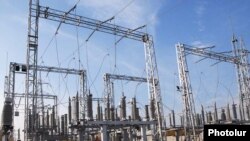Financial documents provided to RFE/RL’s Armenian service by the Electricity Networks of Armenia (ENA) on Tuesday show the company making 25.1 billion drams ($69 million) in profits last year, sharply up from 16.7 billion drams posted in 2009 and 11 billion drams in 2008.
The figures indicate a remarkable turnaround in the ENA’s operations. The power grids incurred significant financial losses, estimated at $50 million each year, before being sold by the Armenian government in 2002 to Midland Resources, an obscure British-registered firm. Most of them were believed to have resulted from widespread theft among various-level employees of the network.
ENA, which is now one of Armenia’s largest corporate taxpayers, has undergone significant restructuring and received large-scale capital investments since then. Midland announced that it has ended the losses and moved the company into profit in 2004, before selling it to a subsidiary of Russia’s RAO Unified Energy Systems (UES) power giant.
ENA profits have soared despite dwindling electricity production in Armenia. According to the National Statistical Service (NSS), it was down by 9 percent and 14 percent in January-November 2010 and 2009 respectively.
Besides, the price of electricity for Armenian households, has not changed significantly for over a decade, suggesting that the increased ENA earnings were the result of a greater efficiency of power distribution. The price was raised from 24 to 30 drams (8 U.S. cents) per kilowatt/hour in early April 2009, the first such increase approved by state utility regulators in eleven years.
ENA’s parent company, Inter RAO UES, decided on Monday to replace ENA’s longtime chief executive, Yevgeny Gladunchik, by another Russian official. An Armenian pro-opposition newspaper claimed the next day that Gladunchik will return to Russia because an independent audit of ENA books uncovered large-scale financial abuses.
An Inter RAO UES spokesman, Nikolay Gorelov, flatly denied this, however, saying that Gladunchik was promoted to a higher company position in Moscow. “If a person does a bad job, he can’t be promoted,” he told RFE/RL’s Armenian service. “On the contrary, [Gladunchik] has achieved big successes, as a result of which Inter RAO UES decided to transfer him to its head office.”
Armenian electricity tariffs have remained largely stable despite a steady rise in the price of Russian natural gas supplied to Armenia. It is used for generating roughly one-third of the country’s electricity.
The gas price rose by 14 percent in 2009 and by another 17 percent, to $180 per thousand cubic meters, in April 2010. The Russian monopoly Gazprom plans to raise it further starting for next April.
The Armenian government said late last month that it still hopes to prevent the price hike. But in an interview with the German magazine “Der Spiegel” this week, Gazprom chief Alexei Miller insisted that the gas tariff for Armenia will reach a “market-based” level in the near future.
Gazprom currently sells gas to Europe at an average of $300 per thousand cubic meters.
The increased cost of the gas, the main source of winter heating for Armenians, has caused gas consumption in the country to fall at an annual rate of about 20 percent since 2008. Analysts say it will dip further if Gazprom presses ahead with its plans.
A Gazprom spokeswoman, Olga Moreva, made clear on Tuesday that this will not deter the state-owned conglomerate. “The only thing we take into account is the oil basket peg,” Moreva told RFE/RL’s Armenian service. “We set prices for our consumers abroad on the basis of that.”





